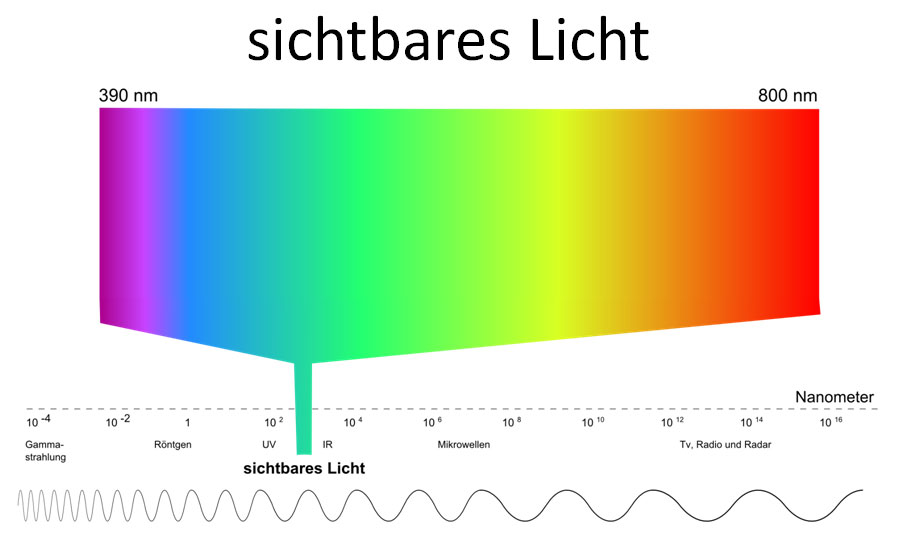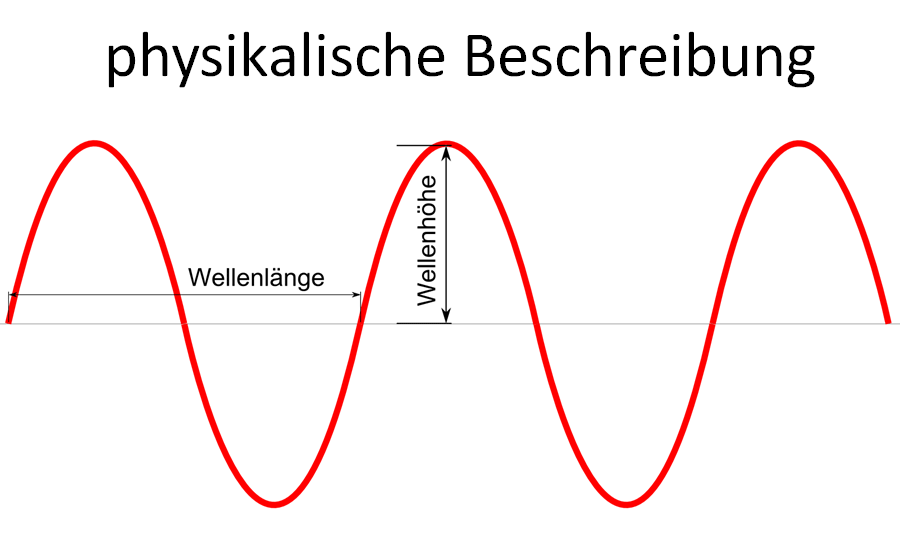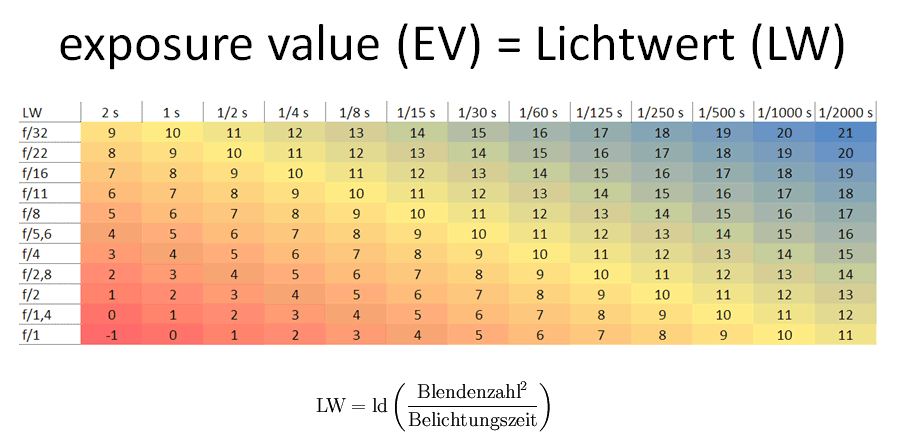Interrelation between light, exposure measurement, and exposure value (EV)
Light and photography
For photography the visible light is of utter importance. This is measured in nanometer (nm). For example, as a human you can only see gamma rays or X-rays with specific devices, while bees can see UV light. That is one way how life forms perceive light in different forms.

Visible light and photography
Physical description
Light is waves. Two factors are important: the wave length and the wave height.

Physical light as a wave model
The wave length determines the color of the light. In photography the white balance is important concerning this (a deeper explanation later).
The light height determines the brightness. This depends on many different variables (sun position, clouds, fog, rooms, etc.). The brightness is very important for the exposure measurement and the perfect photo.
Exposure measurement
The measurement of the illumination takes place in the camera or with an exposure meter. The measurement calculates the exposure value, in other words: the light value. Most cameras DO NOT shoot it as a single value, instead they display it as a combination of f-number and shutter speed.
Exposure value (EV) = exposure value system (EVS) = light value
Light measurement
The light measurement takes place within the exposure meter either with a normal light measurement (with the calotte) or as an object measurement (spot measurement without calotte). The calotte is a transparent plastic cover in the shape of a hemisphere.
Light measurement means that the exposure meter is placed where the object or person we want to depict is standing. An object measurement measures the light that is reflected from the object we want to depict. The more exact procedure of these two is the light measurement.
Reading the exposure meter

Reading the exposure meter
First, we set the type of measurement (For instance the exposure value) Alternative you can set the time, the f-number or the flashlight (for studio photography). Afterwards we set the sensitivity with which we want to work (ISO value). As a result, we get different data: EV, aperture value and shutter speed.
The exposure value (EV) can be found in the chart:

Chart exposure value (EV)
Having the exposure value is beneficial, because this value states, which combination of shutter speed and aperture setting is necessary. Sometimes we read instead of the term exposure value (EV) the term light value (LV).
Why this information?
Normally, digital cameras can automatically do the exposure measurement and the white balance, but this is not always the case. Additionally, an image composition is easier with an understanding of the relevant technical interrelations.